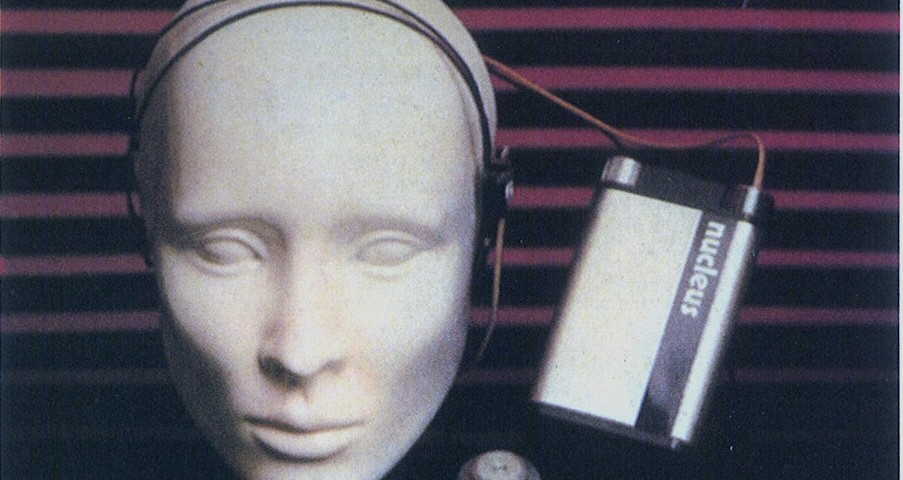
This Week: Issue 9 Submissions: Calling All Cyborgs!
Each week, a member of the JITP Editorial Collective assembles and shares the news items, ongoing discussions, and upcoming events of interest to us (and hopefully you). This week’s installment is edited by Carlos Hernandez and Tyler Fox.
Michael Chorost’s memoir Rebuilt: How Becoming Part Computer Made Me More Human is no cyborg valentine to technology. Chorost describes how, after he lost his hearing completely in 2001, he decided to undergo a radical surgery that would install a computer interface in his head that would interact with a computer he clipped onto his belt. With these, he would be able to hear again.
Well, “hear.” The interface between hardware and wetware took a long period of learning and adjustment. At the beginning of the process, the world Chorost heard made different sounds altogether: “In my experience,” writes Chorost, “paper made sounds like blap, snip,and vrrrrr, and if rudely treated, szzzzz. It didn’t go bingggg” (73). Different software for his computer-alternative hearing offered varying affordances; in a way, he was able to choose how he heard, which on the surface might sound like a cyber-blessing. But when every sound is a simulacrum, an ersatz version of the Platonic ideal of what you think sounds should sound like, you too might say, as Chorost does, “the implant [was] a tool that would enable me to do something which resembled hearing. It would not be hearing…. How bizarre” (79).
Chorost’s hearing never returned to what it had been prior to its loss. But his computer-assisted audition gave him a kind sound detection, one that proved useful, emotionally satisfying, and in the words of the book’s subtitle, humanizing. His vision for what humanity’s future could be–it’s a hard-one dream, arrived at only after a long katabasis–imagines a Haraway-esque incorporation (quite literally) of technology into our lives:
“When I think of the future of human potential in a hypertechnological age, I imagine a generation of people who have been educated to focus intensely on the world of matter and spirit, while also using powerful tools for mediating their perception of reality. They will bond with machines, but they will not be addicted to them. They will analyze while looking at art, and laugh while reading computer code. They will make exquisite use of floods of information, while not allowing themselves to be stunned into passivity” (181).
But such a thoughtful, critical, considered and salubrious relationship to technology will not happen by itself. Quite the contrary: we can expect Facebook to continue experimenting on its users (and issuing apologies after the fact); governments to continue tracking us through backdoors they pay corporations to create for them; and untold numbers of companies to continue collecting, in ways ranging from ignorant to willfully irresponsible, massive amounts of information from its users, only to have it stolen by hackers–to draw only three examples from the inexorable flood of news reports emerging about how increasingly, and how thoughtlessly, we lead our cyber lives.
As educators, our greatest ethical mandate is to create an informed and thinking citizenry. JITP exists to help us meet that obligation. We focus specifically on the interaction between technology and education, drawing from the educational traditions of critical pedagogy, constructivism, and the digital humanities. We are devoted leveraging both theory (writ large) and experimentation to serve as the twin foundations for best practices in the class. You can read more about our mission here.
We invite you to join us. We have a number of different formats to which you may submit your work to JITP, ranging in length and levels of formality. Full-length articles are peer-reviewed, but we don’t stop there; putting our own theories into practice, we work closely with authors in a pre-publication conversation about their work that our authors have found enriching and beneficial to their intellectual work (and you can see here and here [for the latter, jump to around 22:20 for soundbite!]).
Issue 9 has no theme; we welcome papers from all disciplines and all theoretical/experimental approaches. We promise you a thorough review process, and we seek not only to produce the best possible scholarship but to benefit you personally as a writer and researcher.
At one point in Rebuilt, Chorost reminds us that even chalk is technology. If we don’t believe him, he challenges us to try making our own. To my mind, that moment serves as not only a piece of wit, but a call to action: we are always already awash in technology. As educators, our job is to think critically about the technologies we employ, and to help our students understand our technology-inundated world. That’s why JITP exists, and why you should write with us.
P.S. Here’s an interview Michael Chorost conducted with NPR about Rebuilt.
Stark & Subtle Divisions
Graduate students from UMass Boston curate an Omeka site on desegregation in Boston.
http://bosdesca.omeka.net
Gender Equality in Science
A recent study indicates that poor nations are leading the way in gender equality in science.
http://www.scidev.net/global/gender/news/poor-nations-gender-equality-research.html
ECDS: 2016 Digital Scholarship Residency
ECDS is now accepting proposals for a 3-day digital scholarship residency at Emory University during the Spring semester 2016. Scholars from any discipline who use and promote digital scholarship methods in research and teaching are encouraged to apply.
https://scholarblogs.emory.edu/ecds/2015/09/09/ecds-2016-digital-scholarship-residency/
Editorial Violence…
http://www.theonion.com/article/4-copy-editors-killed-in-ongoing-ap-style-chicago–30806
Lastly, HASTAC/Futures Initiative is offering an online forum and live-streamed workshop on “Peer Mentoring and Student-Centered Learning,” part of The University Worth Fighting For #fight4edu series. http://bit.ly/peer-mentoring The forum will be open all month, and our live-streamed workshop will be this Thursday @ 1 pm EST.
Featured Image “Nucleus cochlear implant Graeme Clark” courtesy of Flickr user adrigu.



'This Week: Issue 9 Submissions: Calling All Cyborgs!' has no comments
Be the first to comment this post!